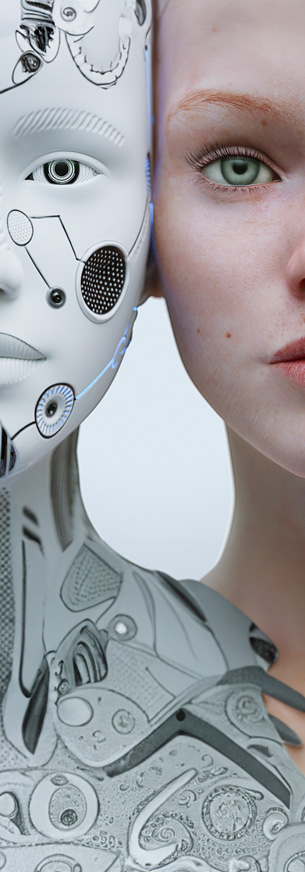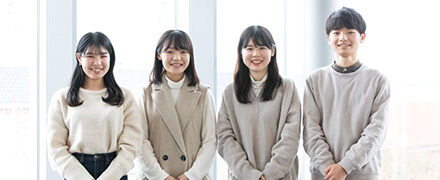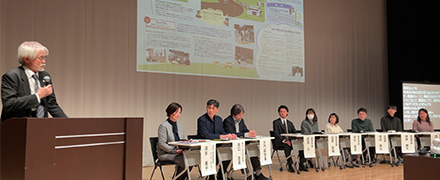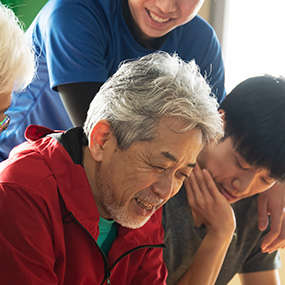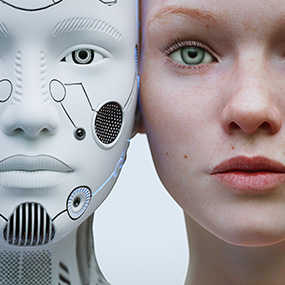Supervision Tatsuya Nomura / Professor, Faculty of Advanced Science and Technology, Ryukoku University
The Japanese love of robots surprises even researchers.
Japan is said to be a country with a rare love of robots. In particular, enthusiasm poured into the development of humanoid robots is so great that it makes people overseas wonder. Although circumstances differ from country to country and from region to region (for example, it is difficult to create humanoid robots in regions where idolatry is prohibited), it is unusual to find a country where the image of “robots that get along with people,” as epitomized by Astro Boy, has become so widespread. Why on earth do the Japanese love robots so much?
“We don't know exactly why. It is said that it may be due to animism, the belief that everything has a soul, but there is no data to support this,” said Professor Nomura, applying insights from psychology and sociology.
“About 20 years ago, the pet robot ‘aibo’ was a big hit, and the first owners were incredibly attached to their pet. Even now, some continue to take care of it, and give the aibo a funeral when it reaches its limits. When I show such funeral photos to overseas researchers, they are surprised (laughs).”
Pitfalls of “natural” robot design
How should we design robots to live together with us as neighbors? What cannot be ignored is the issue of human stereotypes and biases. In particular, there has been frequent discussion of the relationship with gender bias. A few years ago in Japan, an illustration of a female robot doing housework on the cover of a magazine published by the Japanese Society for Artificial Intelligence was questioned as being based on the stereotype that housework is a woman’s job.
Research has shown that people’s stereotypes influence the expected gender appearance of humanoid robots. (*2) The same research says that the pros and cons of designing robots based on existing stereotypes are now being discussed.
“The designers of the robot, the people who have the authority to make decisions regarding the introduction of the robot, and the users who will come into contact with the robot. A design is the result of many different people’s ideas, but if we try to create a “natural” design that is easily accepted by as many people as possible without feeling uncomfortable, it will reflect the stereotypes held by the majority. There is concern that this can lead to the reproduction of stereotypes and the reinforcement of bias.”
*2 Eyssel, F. and Hegel, F. (2012). (S)he’s got the look: gender stereotyping of robots. J Appl Soc Psychol 42:2213–2230.
To become aware of the “unconscious” that creeps into the design
Gender-neutral robots such as ‘Pepper’ (aka ‘Pepper-kun’) and cat-shaped catering robots, etc., which do not assume a gender or take the form of a person, are also concrete attempts and considerations regarding robots and gender. However, we cannot uniformly conclude that this is the right answer.
“For example, when introducing a robot into a care or counseling environment, what if a customer requests a gender? While some believe that the request should be met, others believe that a design based on stereotypes is not a good idea. The ‘right’ answer depends on whom you are designing for and what you are focusing on.”
Since there is no single correct answer, the question for developers is whether they can explain the design they have worked on. The developer must be aware of his or her own decision-making process and why the design was chosen.
“In the past, there was an atmosphere in which engineers and scientists did not have to pay attention to social issues, but that is no longer the case. It is now commonplace to feel that we must always be able to explain how our research and technology will impact society.”
However, it is not uncommon to design interfaces casually when developing services that use robotics and AI technologies, he says.
“I once had a young researcher create a guide AI that looked like a high-school girl. When I asked him, ‘Why did you do that?’ he replied, ‘I found it in the production tools, so I used it casually.’ Before using it ‘casually,’ could he go one step further and ask himself, ‘Is this a good idea?’ I think this is where a person’s societal awareness is reflected.”
The power of robot design to change stereotypes
There are cases in which robots have positively influenced human stereotypes.
“There are foreign studies which show that robots with existing gender types that have been assigned the opposite sex have reduced the stereotypes of the people they interacted with. (*3) In a video-viewing experiment with children, when a female robot performed a job that contradicted a stereotype (truck-hauling) and a job that conformed to the stereotype (office secretary), the former condition resulted in lower tendencies to stereotype. In the future, it would not be a far-fetched strategy to implement similar measures in Japan in order to increase the gender gap index.”
*3 Song-Nichols, K., and Young, AG. (2020). Gendered robots can change children’s gender stereotyping, Proc CogSci 2020.
Ethics in the age of human-robot symbiosis
In addition to gender and bias, there are countless other types of debate about the relationship between robots and humans. For example, the pros and cons of “humans having feelings for robots.”
“I mentioned that Japanese people are fond of robots, but there are some who argue that robots are inorganic objects and that it is unhealthy to have a one-sided affection for inorganic objects. This argument, for example, raises questions that are not limited to the so-called scientific field, such as ‘Since humans and robots are different, can we really know each other’s feelings?’ and ‘When AI-equipped robots with programmed consciousness appear, can we say that the relationship will be interactive?’”
The creation of “robot ethics” is necessary to think comprehensively about the nature of robots and the nature of the relationship between humans and robots, says Professor Nomura.
“Robots and AI are often thought of as science-related topics, but they are topics that should be considered based on the knowledge of all academic disciplines. The complexity of issues surrounding robots is the complexity of human society. Thinking about robots is connected to thinking about people.”




